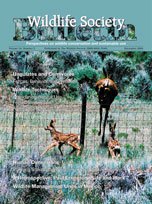We used recent population data and a deterministic matrix model that accounted for important aspects of raptor population biology to evaluate the likely impact of falconry harvest (including take of different age classes) on wild raptor populations in the United States. The harvest rate at maximum sustainable yield (MSY) ranged from 0.03 to 0.41 for the species examined. At least for peregrine falcons (Falco peregrinus), harvest rate at MSY was greatest for nestlings and lowest for adults. The quality of demographic data for the species influenced MSY. For most species the state of current knowledge probably underestimates the capacity for allowed harvest because estimates of vital rates, particularly survival, are biased low, because emigration is not distinguished from survival. This is offset somewhat by biases that might overestimate sustainability inherent in MSY-based analyses and deterministic models. Taking these factors into consideration and recognizing the impracticality of monitoring raptor populations to determine actual effects of harvest, we recommend that falconry harvest rates for juvenile raptors in the United States not exceed one-half of the estimated MSY up to a maximum of 5%, depending on species-specific estimates of capacity to sustain harvest. Under this guideline, harvest rates of up to 5% of annual production are supported for northern goshawks (Accipter gentilis), Harris's hawks (Parabuteo unicinctus), peregrine falcons, and golden eagles (Aquila chrysaetos); lower harvest rates are recommended for other species until better estimates of vital rates confirm greater harvest potential.
How to translate text using browser tools
1 December 2006
Effects of Falconry Harvest on Wild Raptor Populations in the United States: Theoretical Considerations and Management Recommendations
BRIAN A. MILLSAP,
GEORGE T. ALLEN
ACCESS THE FULL ARTICLE
It is not available for individual sale.
This article is only available to subscribers.
It is not available for individual sale.
It is not available for individual sale.

Wildlife Society Bulletin
Vol. 34 • No. 5
December 2006
Vol. 34 • No. 5
December 2006
demographics
falconry
harvest
maximum sustainable yield
modeling
raptors
United States




